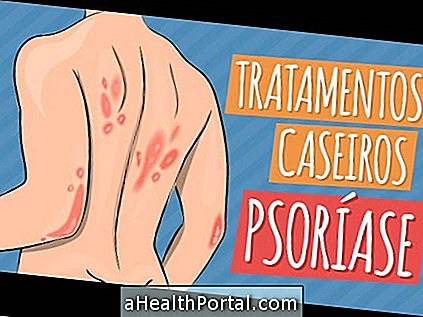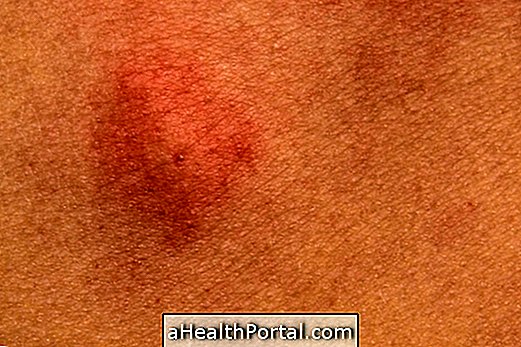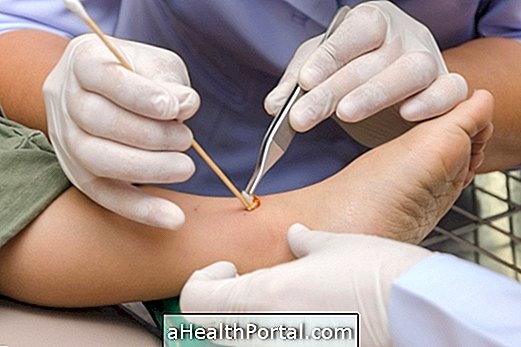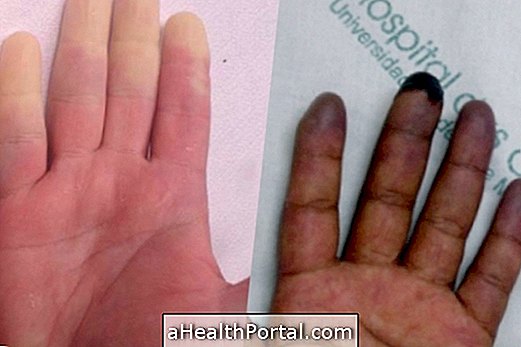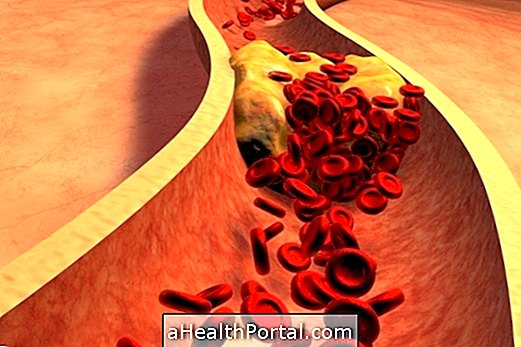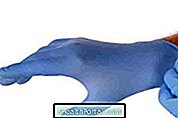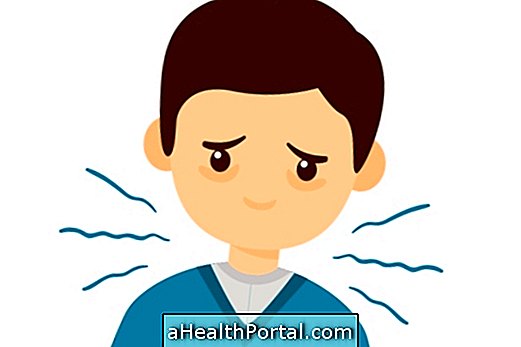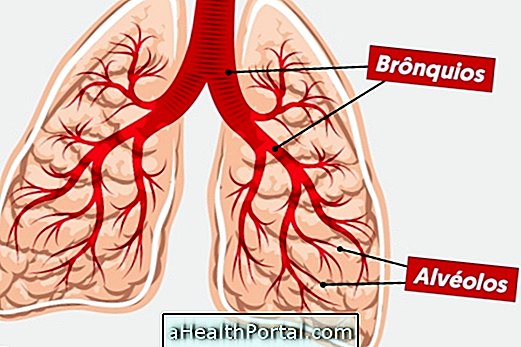The lump on the head is usually not very severe and can be treated easily, often with pain relief medications alone and the observation of lump progress. However, if it is noted that there are more lumps or that there is an increase in size, it is important to seek medical help because it can mean more serious conditions that are more specific, such as cancer.
The presence of the lump in the head usually does not cause symptoms, but it can cause a lot of discomfort, especially when combing the hair, for example, which can become quite painful.
The appearance of the lump may be due to several situations, such as seborrheic dermatitis, sebaceous cyst and even urticaria, being the diagnosis made by the dermatologist from the observation of the lump and the characteristics of the scalp. The main causes of lump in the head are:

1. Seborrheic dermatitis
Seborrheic dermatitis is the most common cause of lump in the head and is characterized by a thick yellow or whitish scab on the scalp that usually itches. The area around the lump is usually soft and painful when touched. Understand seborrheic dermatitis and how home treatment is done.
What to do: Usually the treatment recommended by the dermatologist includes the use of shampoos or ointments containing antifungal or corticosteroids, as well as frequent head washing and non-use of gels, caps or hair sprays. Learn more about the treatment of seborrheic dermatitis.
2. Head injury
Usually strokes on the head lead to the appearance of lumps, which are indicative that the body is trying to recover from the injury. More traumatic injuries, such as those due to car accidents, for example, lead to larger, more painful lumps and bleeding. Find out what are the types of cerebral hemorrhage.
What to do: After a blow to the head, it is important to go to a medical emergency so that you can do imaging to see the skull and detect signs of bleeding, for example. However, lumps that appear on the head after strokes usually pose no risk and disappear after a few days.
Sebaceous cyst
The sebaceous cyst on the head corresponds to a pus-filled lump that arises due to clogging of the pores with dirt, dust or natural oiliness of the skin and hair. The presence of the cyst in the head can cause pain when the person washes or combs the hair, for example. Here's how to identify the sebaceous cyst.
What to do: Treatment of the sebaceous cyst is usually done through surgery and, even if in most cases it is benign, part of the cyst is sent to the laboratory for a biopsy.
4. Folliculitis
Folliculitis on the scalp is difficult to achieve, but can be caused by the development of fungi or bacteria in the root of the wires, leading to the appearance of lumps. In more severe cases, there may be loss of hair in the region, being called folliculitis decalvante or dissecting. Learn more about folliculitis.
What to do: Treatment for folliculitis on the scalp can be done with the use of antifungal shampoos, such as ketoconazole, or the application of antibiotics such as Erythromycin or Clindamycin, according to the dermatologist and agent responsible for folliculitis.

Urticaria
Urticaria is an allergic reaction that usually affects the skin, with red spots that itch and become swollen. However, the symptoms of urticaria can also be noticed in the head, through the appearance of small lumps that usually scratch a lot.
What to do: The treatment of urticaria is done according to the advice of the dermatologist and, most of the time, is done with anti-allergic medicines, such as Loratadine, for example, or oral corticosteroids, such as Prednisone, to relieve itching and swelling. Understand how to identify and treat hives.
6. Basal Cell Carcinoma
Basal cell carcinoma is the most common type of skin cancer and is characterized primarily by the presence of small spots on the skin that grow slowly over time. In addition, the dermatologist may identify small bumps on the head accompanied by blemishes, which is also indicative of basal cell carcinoma. Learn more about this type of carcinoma.
What to do: When noticing the presence of spots around the lump in the head, it is important to go to the doctor so that the diagnosis can be made and the treatment started. Treatment is usually done by laser surgery or cold application at the injury site. In addition, it is important to avoid prolonged exposure to the sun, wear caps or hats and apply sunscreen periodically. Understand more about the treatment for skin cancer.
When to go to the doctor
It is important to see your doctor if any of the following conditions are noted:
- Appearance of more than one lump;
- Increase in size;
- Emergence of spots;
- Change in core color;
- Severe headache.
Diagnosis of the cause of the lump in the head is usually done by a dermatologist, but can also be done by a general practitioner. The doctor will assess the characteristics of the lump as well as the scalp so that you can close the diagnosis and start treatment, which varies according to the cause.


